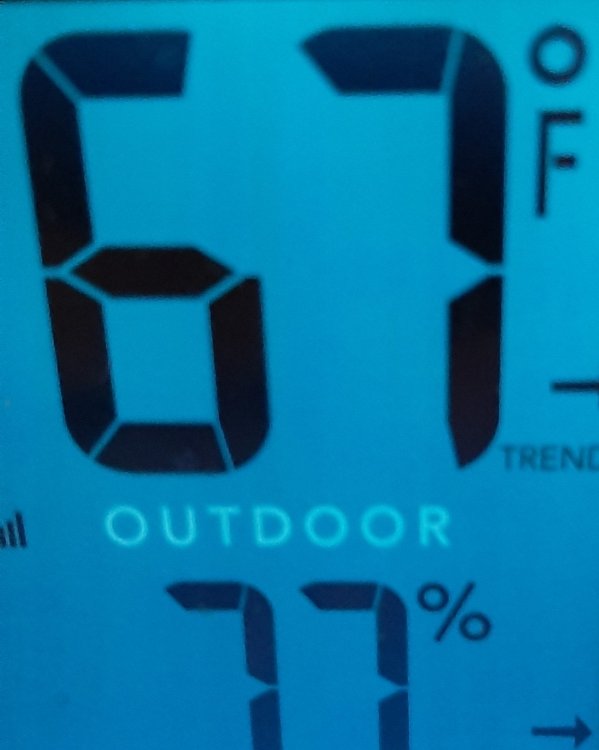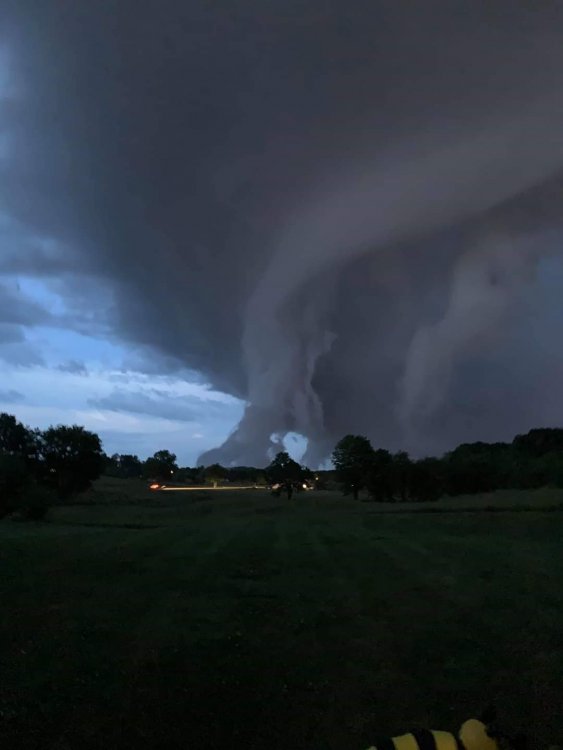
John1122
Members-
Posts
11,142 -
Joined
-
Last visited
Content Type
Profiles
Blogs
Forums
American Weather
Media Demo
Store
Gallery
Everything posted by John1122
-
Another afternoon with the temp at 69/70. So rare for it to rain all day in summer too unless a hurricane is involved.
- 186 replies
-
- tennessee river valley
- wind
- (and 4 more)
-
It was cloudy here at sunset. I was expecting some vivid colors but no such luck.
- 186 replies
-
- 1
-

-
- tennessee river valley
- wind
- (and 4 more)
-
The dust certainly lived up to its billing. There's just a bit of brown tinge to all the haze and it's way thicker than normal summer haze.
- 186 replies
-
- 2
-

-
- tennessee river valley
- wind
- (and 4 more)
-
They are very easily scared, fortunately. At least the ones here are. They aren't the Gatlinburg city bears that people watch. Those are the ones to worry about.
- 186 replies
-
- 2
-

-
- tennessee river valley
- wind
- (and 4 more)
-
Hot and sticky for my walk this evening. A few rain drops and I walked up near face to face with a bear in the road about 1/4th mile from my house. Clapped my hands and it took off back into the woods. Dogs gave a brief chase but lost interest quickly. Wild Raspberries are getting ripe in the area. Guess it's been into them.
- 186 replies
-
- 3
-

-
- tennessee river valley
- wind
- (and 4 more)
-
Several rounds of excessive rainfall today. 2.74 inches so far. Had a persistent 45 minute heavy thunderstorm around 3 that really upped totals.
- 186 replies
-
- tennessee river valley
- wind
- (and 4 more)
-
3 pm and 66 degrees. I don't remember when we've had a stretch of days like this in mid-June before.
- 186 replies
-
- 3
-

-
- tennessee river valley
- wind
- (and 4 more)
-
Another afternoon and early summer evening with temps falling from the 70s into the 60s. We keep getting summer in fall, it's nice to get fall in summer.
- 186 replies
-
- 2
-

-
- tennessee river valley
- wind
- (and 4 more)
-
Went walking this evening, felt like early October. Temp was 63 at 8pm, plus the humidity was down from yesterday.
- 186 replies
-
- 4
-

-
- tennessee river valley
- wind
- (and 4 more)
-
- 186 replies
-
- 2
-

-
- tennessee river valley
- wind
- (and 4 more)
-
Hard to beat today, currently sitting at 72 degrees with low humidity. Evening walk is going to feel much better than yesterday when it was 86 with a 75 dp.
- 186 replies
-
- 1
-

-
- tennessee river valley
- wind
- (and 4 more)
-
June rolled in at 45 degrees here this morning.
- 186 replies
-
- tennessee river valley
- wind
- (and 4 more)
-
Someone posted this about an hour ago claiming it was London, Ky and even gave the street they they took the picture from. Not sure if it's true, mainly interested on what kind of cloud this is.
-
.85 rainfall with a lot of limbs out of trees in the storm. Up to about forearm thickness.
- 186 replies
-
- tennessee river valley
- wind
- (and 4 more)
-
Rocking and rolling here this afternoon. Very strong winds, heavy rain and small hail.
- 186 replies
-
- 1
-

-
- tennessee river valley
- wind
- (and 4 more)
-
Wild Speculation for Winter 20 -21
John1122 replied to Holston_River_Rambler's topic in Tennessee Valley
I just wish we could get our BN warm season weather, which has been frequent the last few years, to actually cooperate in winter and land there for a change. -
.48 inches of rain yesterday, mostly between midnight and 7 am. Temp stayed in the upper 50s to low 60s during the day.
- 186 replies
-
- tennessee river valley
- wind
- (and 4 more)
-
3.85 inches of rain yesterday into this morning. Most of it between about midnight and 6 am. Had some more flooding in parts of the area. May had been comparatively dry before that. Each month this year has had one of these anomalous rain events where we get 3.5+ inches in a 24 hour period.
- 186 replies
-
- 3
-

-

-
- tennessee river valley
- wind
- (and 4 more)
-
Not that it helps is any in winter like it has in the past, but the sun is at just over 100 days in 2020 with no sunspot activity, further correlating to the Little Ice age minimums the NASA scientist was talking about two years ago, which was also several consecutive record low activity cycles.
- 186 replies
-
- 2
-

-
- tennessee river valley
- wind
- (and 4 more)
-
She will remember days like this when she's with her future little ones.
- 292 replies
-
- 2
-

-
- garden
- vegetables
-
(and 4 more)
Tagged with:
-
Was it 1955-56 we were looking at late last fall into winter comparing similarities to this year? I was looking at record lows for each month and it appears June, August and September of 1956 all had monthly record lows for here. June 1956 - 33 degrees August 1956 - 41 degrees September 1956 - 31 degrees. 1961, which doesn't have the record coldest May day here, did have the end if month freezes. 1961 also has the record low for July of 45 degrees. We've been close to that one a few times since 2009 here with several July nights in the 40s.
-
Check 1961. My grandfather recorded 30 and 32 on May 27th and 28th that year. Latest likely frost was 33 on June 3rd 1956. We also had a 39 on June 2nd. The high was only 52 on the 2nd.
-
31 this morning. Probably the next time its below freezing we will be in October and over the heat and humidity.
- 186 replies
-
- 1
-

-
- tennessee river valley
- wind
- (and 4 more)
-
Bright blue skies and 50 degrees around 7:30 this evening. Felt like I should be about to watch a football game in November. Temp has dropped to 45 with the sun going down. DP is 25.
- 186 replies
-
- 3
-

-
- tennessee river valley
- wind
- (and 4 more)
-
29.4, should probably be as low as it's going right now. Stations around the area are 29 to 31. One just went from 29 to 30.
- 186 replies
-
- 1
-

-
- tennessee river valley
- wind
- (and 4 more)


